Welcome to our comprehensive guide to Ludwigia Inclinata, the stunning aquatic plant that brings vibrant color and beauty to aquariums. With its rich and dynamic hues, Ludwigia Inclinata has become a favorite among aquascaping enthusiasts.
In this article, we will explore the characteristics of Ludwigia Inclinata, provide a detailed care guide for successful growth, and share valuable tips for propagation techniques.

Key Takeaway
- Ludwigia Inclinata is a versatile and eye-catching aquatic plant known for its vibrant colors.
- Proper care and maintenance are essential for the health and vibrancy of Ludwigia Inclinata.
- Propagation techniques, such as stem cuttings, can help aquarists expand their collection of Ludwigia Inclinata.
- Ludwigia Inclinata is vital in aquarium ecology, contributing to water quality and inhabitant well-being.
- Aquarists can create stunning underwater displays with Ludwigia Inclinata by following our comprehensive care guide.
Quick Stats
| Attribute | Details |
| Family Name | Onagraceae |
| Origin | Central and South America |
| Height | 20-50 cm (8-20 inches) |
| pH Range | 5.0 – 7.0 |
| CO2 Requirement | High |
| Growth Rate | Fast |
| Care Level | Difficult |
| Color Form | Yellow, orange, red to pink leaves, depending on variety and conditions |
| Water Conditions | 22-28°C (72-82°F), soft to moderately hard water |
| Max Size | Can grow up to 50 cm (20 inches), often trimmed shorter |
| Lighting | High |
| Supplements | Requires CO2 supplementation, iron, and a comprehensive fertilizer for vibrant coloration |
| Placement | Mid-ground to Background |
| Propagation | Stem cuttings |
What Is Ludwigia Inclinata?
Ludwigia Inclinata is an exquisite aquatic plant that belongs to the Ludwigia genus. Aquascaping enthusiasts are drawn to this species for its vibrant colors and lush growth.
With its striking leaves showcasing a mesmerizing palette of deep greens to intense reds, Ludwigia Inclinata adds a captivating visual element to aquariums.
The coloration of this aquatic plant varies depending on the lighting and nutrient conditions within the tank, enabling aquarists to achieve a range of captivating aesthetics.
The versatility of Ludwigia Inclinata makes it a popular choice for creating stunning visual effects in aquascapes.
| Variety | Description |
| Ludwigia Inclinata var. verticillata | This variety features densely-packed, lanceolate leaves that exhibit intense red coloration, making it a showstopper in any aquarium. |
| Ludwigia Inclinata var. cuba | With its vibrant green leaves that transition into beautiful reddish-orange hues, this variety adds a dynamic touch to aquascapes. |
| Ludwigia Inclinata var. ‘Pantanal’ | Known for its vibrant coloration, this variety boasts leaves that range from reddish-brown to burgundy, creating an eye-catching centerpiece in aquariums. |
“The vibrant colors and lush growth of Ludwigia Inclinata make it a striking addition to any aquascape.”
Natural Habitat And Origin
Ludwigia inclinata is native to Central and South America, particularly found in regions with tropical and subtropical climates. It is commonly found in marshy areas, shallow ponds, streams, and slow-moving rivers.
This species typically grows submerged or partially submerged in nutrient-rich water with ample sunlight. Ludwigia inclinata is known for its ability to adapt to varying water conditions, making it a versatile and widely distributed aquatic plant in its natural habitat.
Characteristics Of Ludwigia Inclinata
- Ludwigia Inclinata, known for its stunning coloration and unique growth patterns, possesses several distinct characteristics that make it a captivating addition to any aquarium. The leaves of Ludwigia Inclinata can exhibit a wide range of colors, from vibrant green to intense red, depending on the lighting and nutrient levels in the tank.
- One of the standout features of Ludwigia Inclinata is its bushy and lush growth pattern, which adds depth and visual interest to aquascapes. The abundance of foliage creates a captivating backdrop and provides hiding places for tank inhabitants, enhancing the aquarium’s overall aesthetic appeal and functionality.
- Ludwigia Inclinata requires moderate care, making it suitable for aquarists with varying experience levels. Adequate lighting is essential to maintain the plant’s vibrant coloration and promote healthy growth. A nutrient-rich substrate and regular fertilization are crucial for ensuring the plant receives the nutrients for optimal health and vigor.
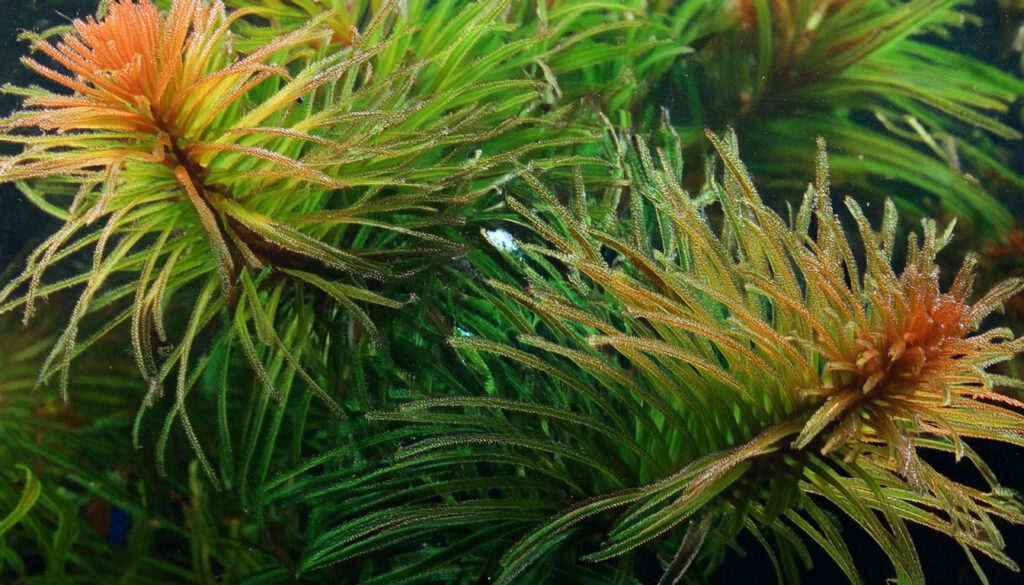
Importance Of Adequate Lighting
- Lighting plays a crucial role in the growth and coloration of Ludwigia Inclinata. Adequate lighting is essential to ensure the plant thrives. Ludwigia Inclinata requires moderate to high light levels for optimal growth.
- We recommend using full-spectrum LED lights that provide a balanced light spectrum, including red and blue wavelengths. This will enhance the plant’s coloration and overall development.
- Make sure to adjust the light intensity and duration according to the specific needs of Ludwigia Inclinata, as too little or too much light can hinder its growth.
RELATED: Cryptocoryne Wendtii Green Planting Guide For Beginners
Optimal Water Condition
- Temperature: Ludwigia inclinata thrives in water temperatures ranging from 22°C to 28°C (72°F to 82°F). Keep the water temperature stable within this range to promote healthy growth.
- pH Level: Aim for a pH level between 6.5 to 7.5. Ludwigia inclinata can tolerate slightly acidic to slightly alkaline conditions, but maintaining a neutral pH is ideal for optimal growth.
- Water Hardness: This plant can adapt to a wide range of water hardness levels, but a moderate to slightly hard water is generally preferred. Aim for a water hardness (GH) between 3 to 10 dGH (German degrees of hardness).
- Nutrient Availability: Ludwigia inclinata benefits from a nutrient-rich environment. Regularly supplement with a balanced liquid fertilizer or root tabs to provide essential macro and micronutrients, including nitrogen, phosphorus, potassium, iron, and trace elements.
- CO2 Supplementation: While not always necessary, providing supplemental carbon dioxide (CO2) can enhance the growth and coloration of Ludwigia inclinata. CO2 injection promotes vigorous photosynthesis and may result in more vibrant foliage.

Suitable Temperature For Growth
The suitable temperature range for the growth of Ludwigia inclinata is typically between 22°C to 28°C (72°F to 82°F). This range reflects the tropical and subtropical climate conditions found in its natural habitat.
Within this temperature range, Ludwigia inclinata exhibits optimal growth and development, ensuring healthy foliage and vibrant coloration.
It’s essential to maintain stable water temperatures within this range to promote the plant’s overall health and vitality in the aquarium.
Choosing The Right Substrate
- When setting up your tank for Ludwigia Inclinata, it is essential to choose the right substrate. A nutrient-rich substrate provides a solid foundation for the plant’s growth and ensures it receives the necessary nutrients for vibrant coloration and robust health.
- We recommend using a substrate specifically designed for aquatic plants, such as aquasoil or nutrient-rich gravel. These substrates provide essential minerals and trace elements that promote healthy growth.
Maximizing Ludwigia Aesthetics Through Placement
The placement of this plant in the aquarium is key to maximizing its visual impact. Consider the following tips for positioning the plant:
- Place Ludwigia Inclinata in the background or midground of the aquarium to create a stunning backdrop.
- Group several stems together for a more impactful display.
- Position the plant in areas where it can receive adequate lighting and nutrient flow.

Recommended Tank Size
- Ludwigia inclinata thrives best in aquariums with a capacity of at least 10 gallons (38 liters) or larger. This ensures ample space for the plant to establish its root system and spread its foliage, contributing to a lush and vibrant aquatic environment.
- Larger tanks provide greater stability in water parameters and offer more opportunities for aquascaping. With sufficient space, aquarists can create intricate layouts and incorporate various plant species, enhancing the overall aesthetics and ecological balance of the aquarium.
Interactions With Other Tank Residents
- It improves water quality and serves as a natural habitat and food source for various tank residents. Many fish species and invertebrates utilize the plant as a hiding place, spawning ground, or grazing area.
- The dense foliage of this plant offers shelter and protection, creating a more natural and enriched environment for the aquarium’s inhabitants.
- Furthermore, the interactions between Ludwigia Inclinata and other tank residents contribute to a balanced aquatic ecosystem.
- The plant forms symbiotic relationships with certain species, offering shelter and food while receiving nutrients and pollination in return. These mutual interactions foster a harmonious and thriving community within the aquarium.
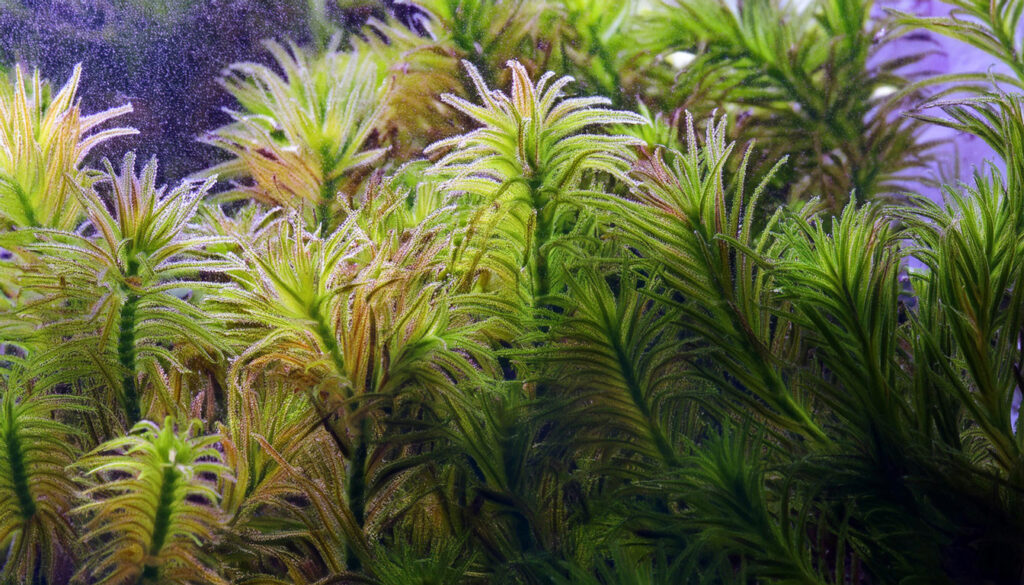
The Role Of Macronutrients And Micronutrients
- Macronutrients, such as nitrogen (N), phosphorus (P), and potassium (K), play a vital role in the overall health and development of it.
- Nitrogen is essential for promoting leaf growth, phosphorus aids in root development and energy transfer, and potassium contributes to plant vigor and disease resistance.
- Micronutrients, including iron (Fe), manganese (Mn), and zinc (Zn), are equally important for Ludwigia Inclinata’s nutrition. These trace elements contribute to various physiological processes, such as chlorophyll synthesis, enzyme activation, and metabolic functioning.
- While micronutrients are required in smaller quantities, their deficiency can lead to stunted growth and diminished coloration in this plant.
- To ensure that it receives an adequate supply of macronutrients and micronutrients, it is recommended that a comprehensive liquid fertilizer specifically formulated for aquatic plants be used. These fertilizers typically contain a balanced blend of essential nutrients that mimic the natural environment and ensure optimal growth and coloration in Ludwigia Inclinata.
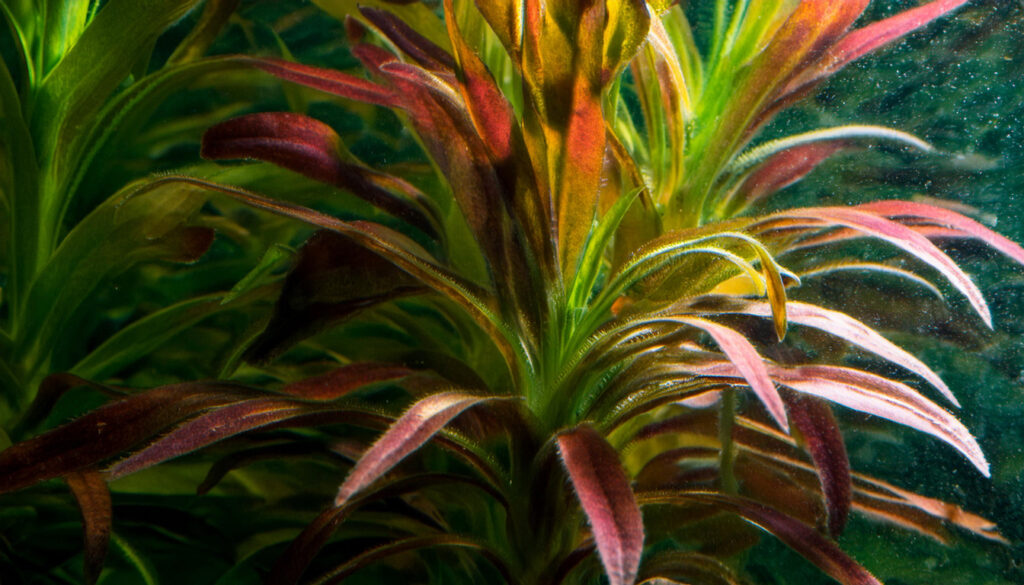
Cultivation Tips
- Nutrient Availability: This plant benefits from a nutrient-rich environment. Supplement with a balanced liquid fertilizer or root tabs to provide essential macro and micronutrients, including nitrogen, phosphorus, potassium, iron, and trace elements.
- CO2 Supplementation: Consider supplementing carbon dioxide (CO2) if possible. CO2 injection can enhance the growth and coloration of this plant, promoting lush foliage and vibrant hues. However, the plant can still thrive in tanks without CO2 supplementation.
- Pruning and Maintenance: Regularly trim and prune the stems to encourage bushy growth and prevent overcrowding. Remove any dead or decaying plant material to maintain water quality and prevent nutrient imbalances.
- Propagation:This plant can be propagated by stem cuttings. Simply trim healthy stems and replant them in the substrate. Ensure that each cutting has several nodes to promote root development.
- Water Flow: Provide moderate water flow to ensure nutrient distribution and prevent debris buildup on the plant’s foliage. However, avoid excessive water flow, which may uproot or damage the delicate stems.
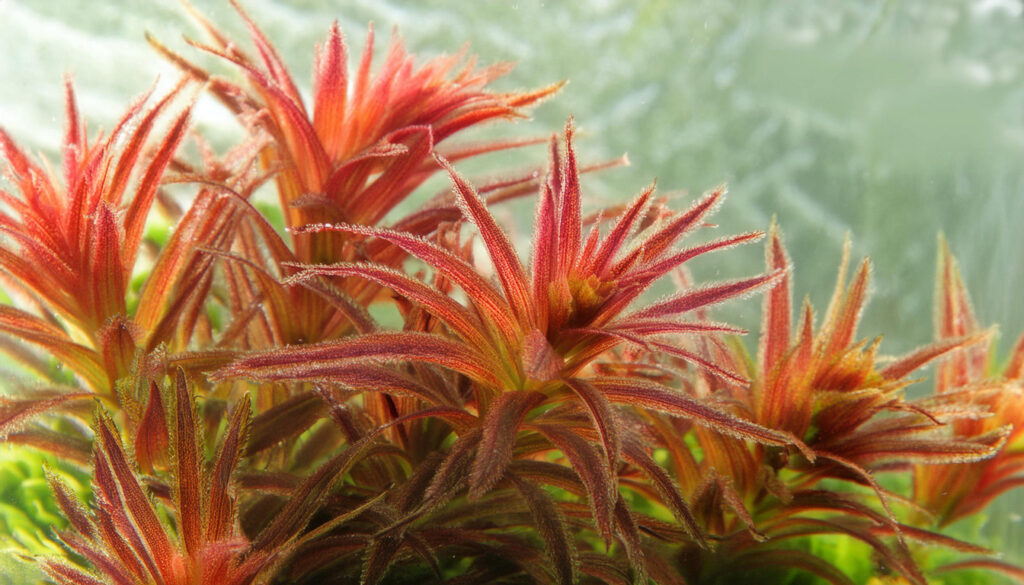
Propagation Techniques For Ludwigia Inclinata
- Start by selecting a healthy Ludwigia Inclinata plant with well-developed stems.
- Cut a stem section from the parent plant using sharp pruning shears or scissors. Ensure the cutting is at least 2-3 inches long and has several leaves.
- Remove any leaves from the bottom half of the stem cutting. This will prevent them from rotting when planted.
- Prepare a separate container with a nutrient-rich substrate. Moisten the substrate slightly to ensure good moisture retention.
- Make small holes in the substrate using a pencil or your finger, spaced apart to accommodate each stem cutting.
- Gently insert the stem cuttings into the holes, ensuring the stem’s bottom half is buried in the substrate.
- Place the container in a location with bright, indirect light.
- Regularly mist the cuttings and keep the substrate moist but not overly saturated.
- Within a few weeks, you should see new roots and growth emerging from the stem cuttings.
- Once the new plants have developed a sufficient root system, they can be transferred to the main aquarium.
Benefits To Water Quality And Inhabitant Well-being
- One of the significant benefits of this plant is its ability to improve water quality. As a fast-growing plant, it absorbs pollutants such as nitrates, ammonia, and phosphates through its roots and leaves.
- By removing these harmful substances, Ludwigia Inclinata helps maintain a clean and healthy aquatic environment, promoting the well-being of other tank residents.
- The presence of it also contributes to increased oxygenation in the aquarium. Through photosynthesis, the plant releases oxygen into the water, benefiting the fish, invertebrates, and other organisms that rely on adequate oxygen levels to thrive.
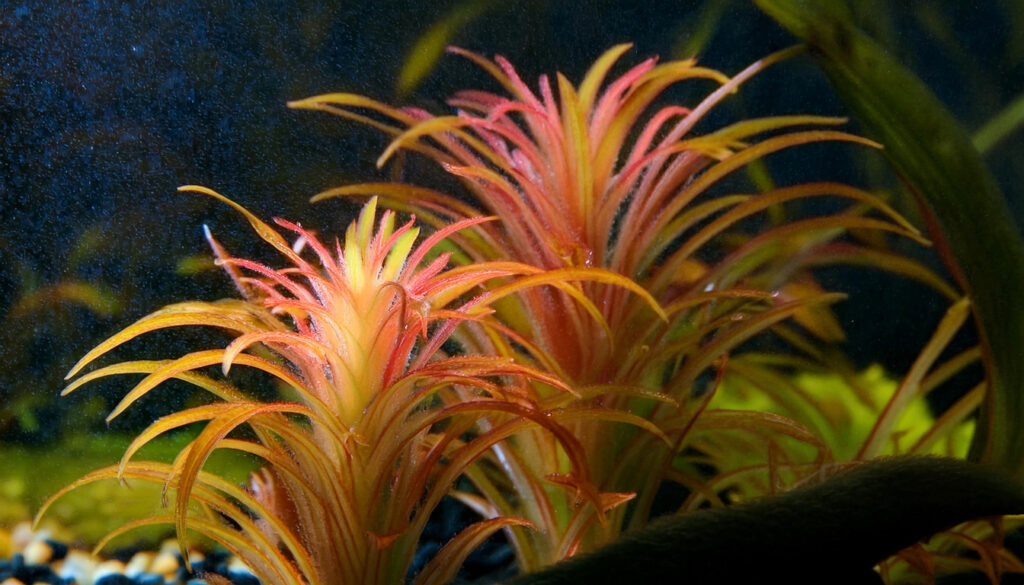
CO2 Supplementation For Lush Growth
- Carbon dioxide (CO2) supplementation is another critical aspect of fertilization for Ludwigia Inclinata. CO2 is a key component in photosynthesis, where plants convert light energy into chemical energy to fuel growth.
- Increasing the availability of CO2 in the aquarium can promote lush growth and vibrant coloration in this plant.
- There are various methods of providing CO2 supplementation, from injecting CO2 gas into the aquarium to utilizing liquid carbon supplements.
- The choice of method depends on the individual aquarist’s preferences and the specific requirements of their Ludwigia Inclinata.
- Maintaining the correct CO2 levels is important, as deficiencies and excesses can adversely affect the plant’s growth and overall well-being.
- Adequate nutrition, including macronutrients, micronutrients, and CO2 supplementation, is crucial for achieving optimal growth and vibrant coloration in it.
- Monitoring nutrient levels and adjusting fertilization practices are essential to ensure the plant’s continued health and vitality.
Conclusion
It is a remarkable aquatic plant that brings beauty and diversity to any aquarium. By following our comprehensive care guide, aquarists can successfully cultivate and maintain Ludwigia Inclinata, ensuring its vibrant colors and unique textures thrive in their aquatic scapes.
We have explored various aspects of it, from tank setup to propagation techniques, providing aquarists with a wealth of knowledge to create stunning underwater displays.
By carefully selecting the right substrate, providing adequate lighting, and following proper planting techniques, aquarists can maximize the aesthetic impact of this plant in their aquariums.
With regular maintenance, including pruning and algae management, aquarists can create a healthier environment for this plant while preventing the onset of algae.
Additionally, propagating it through stem cuttings allows aquarists to expand their collection and continue enjoying this mesmerizing plant.
Frequently Askes Questions
What Are The Proper Planting Techniques For Ludwigia Inclinata?
Proper planting techniques involve taking advantage of the plant’s unique growth patterns and positioning it strategically in the aquarium for optimal visual impact.
What Are Some Growth Tips For Thriving Ludwigia Inclinata?
Proper lighting, nutrient supplementation, regular pruning, and algae management contribute to plant growth and vitality.
What Nutrition And Fertilization Does Ludwigia Inclinata Need?
It requires macronutrients, micronutrients, and CO2 supplementation for robust growth and vibrant coloration.
How Do I Maintain Ludwigia Inclinata?
Regular pruning and algae management are essential for the long-term health and beauty of this plant.
What Is The Role Of Ludwigia Inclinata In The Aquarium Ecosystem?
This plant contributes to water quality and aquarium inhabitants’ well-being while interacting with other tank residents.
- Unveiling The Wonders Of Riccia Fluitans In Aquascapes - August 7, 2024
- Vallisneria Gigantea Var. Guide To Care And Cultivation At Home - July 31, 2024
- Vesicularia Dubyana Care & Growth Guide Tips For Beginner Gardeners - July 30, 2024
